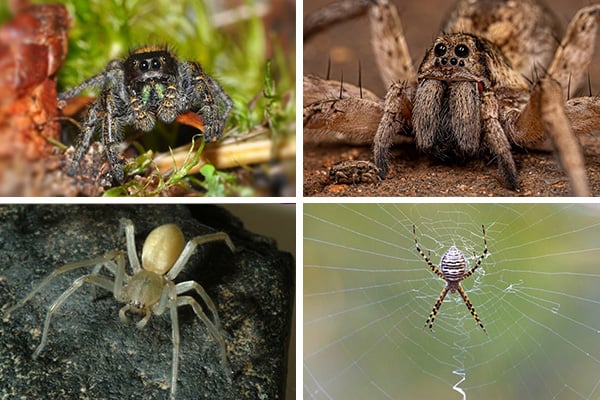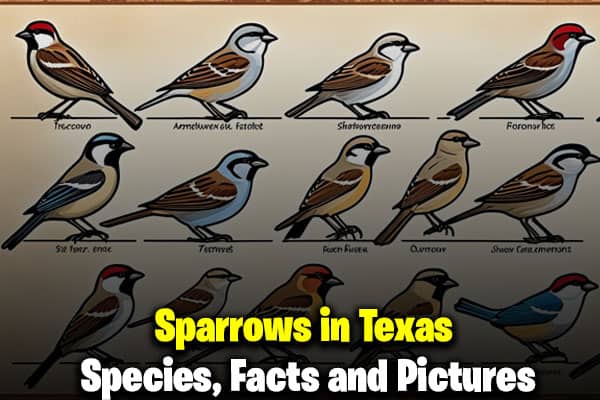6 Types of Common Spiders in California (Pictures)
Learn all about the unique and diverse spiders in California. Discover details about species like the Banded Garden Spider, Johnson’s Jumping Spider, and more!
California is home to a stunning variety of spiders, each with its own unique appearance, behaviors, and habitats. While some people fear these eight-legged creatures, spiders play an essential role in maintaining a healthy ecosystem. Whether you find them spinning webs in your garden or leaping across the forest floor, California’s spiders are fascinating to observe.
In this article, we’ll introduce you to six remarkable spider species found across the state: the Banded Garden Spider, Johnson’s Jumping Spider, Grass Spider, Cellar Spider, Yellow Sac Spider, and the Wolf Spider. For each spider, you’ll learn about its scientific name, size, weight, lifespan, and diet, along with other interesting facts. So let’s dive into the world of California’s spiders and discover what makes each one unique.
1. Banded Garden Spider
- Scientific Name: Argiope trifasciata
- Size: Females are 0.5-1 inch, males are smaller at 0.2-0.3 inches
- Weight: Less than 0.02 ounces
- Lifespan: 1 year
- Diet: Small insects, like flies, mosquitoes, and grasshoppers
The Banded Garden Spider is one of the most striking spider species you may find in your backyard. Its bold colors and large webs make it easily recognizable. Despite its fierce appearance, this spider is harmless to humans and is more interested in catching insects than bothering people.
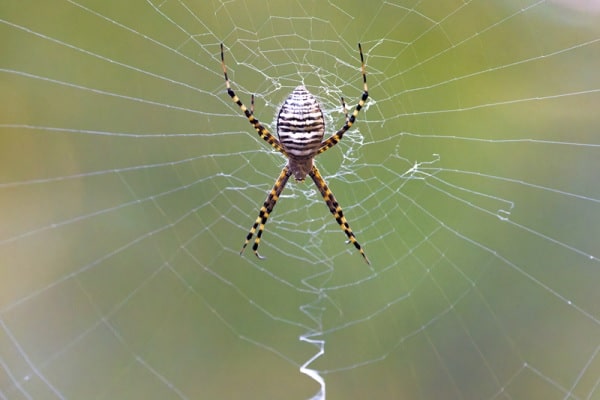
This spider is known for its orb-shaped web, which it uses to capture flying insects. You’ll often find them in open gardens, fields, and shrubbery. They are great at controlling pest populations and are considered a gardener’s best friend.
The Banded Garden Spider spins an orb web, usually found between shrubs or tall grasses. Their webs can be several feet across, helping them catch a variety of prey. If you see a large, white zig-zag pattern in the center of the web, you’ve probably spotted a Banded Garden Spider.
2. Johnson’s Jumping Spider
- Scientific Name: Phidippus johnsoni
- Size: 0.25-0.5 inches
- Weight: 0.01-0.03 ounces
- Lifespan: 1-2 years
- Diet: Insects like flies, moths, and other small spiders
The Johnson’s Jumping Spider is one of California’s most eye-catching arachnids, thanks to its vibrant colors and energetic nature. These spiders are known for their incredible jumping abilities, which they use to catch prey and escape danger. With their large front eyes and curious behavior, they can even seem friendly compared to other spiders.

Unlike web-building spiders, jumping spiders like the Johnson’s Jumping Spider hunt their prey by leaping onto them from a distance. They have excellent vision, which allows them to spot and track down their prey before making a quick jump to capture it.
These spiders are often found in a variety of environments, from gardens to forested areas. They don’t rely on webs to catch their prey, making them unique among spider species. Instead, their agility and quick reflexes allow them to be successful hunters on the ground or in trees.
3. Grass Spider
- Scientific Name: Agelenopsis spp.
- Size: 0.5-1 inch
- Weight: Less than 0.02 ounces
- Lifespan: 1-2 years
- Diet: Small insects like ants, beetles, and flies
The Grass Spider is a speedy, ground-dwelling spider that is commonly found in California’s gardens and lawns. They are best known for their funnel-shaped webs, which they build near the ground. These webs are not sticky, but they help the spider quickly detect and capture prey.
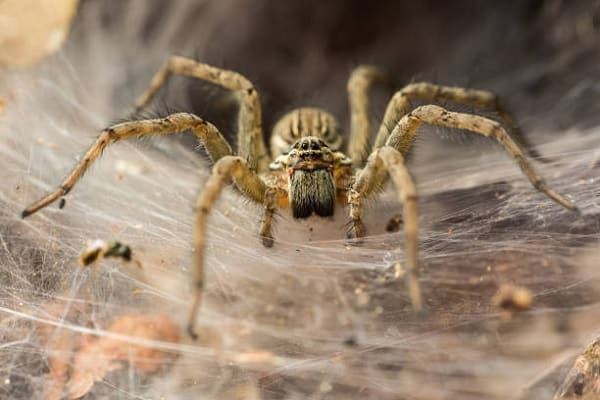
If you’ve ever seen a spider dash across your lawn and disappear into a hole in its web, chances are you’ve encountered a Grass Spider. These spiders are incredibly fast runners, which helps them catch their prey and avoid predators.
The Grass Spider typically waits for prey to wander into its funnel web. Once the prey is close enough, the spider quickly rushes out, bites, and drags the catch back into its web for consumption. Despite their fast movements, these spiders are shy and rarely aggressive toward humans.
4. Cellar Spider
- Scientific Name: Pholcus phalangioides
- Size: 0.2-0.4 inches
- Weight: Less than 0.01 ounces
- Lifespan: 1-2 years
- Diet: Small insects, other spiders, and mosquitoes
Known for their long, thin legs and delicate bodies, Cellar Spiders are common in homes across California. Often found in basements, garages, and dark corners, these spiders are sometimes mistaken for daddy long-legs. While they may look fragile, they are skilled hunters that prey on other spiders and insects.

Cellar Spiders are harmless to humans, and they can actually help control pest populations in and around your home. Their webs are usually irregular and messy, but highly effective for catching prey.
Cellar Spiders don’t just catch insects in their webs—they are also known to invade the webs of other spiders to steal food. Their long legs give them an advantage when it comes to navigating their own webs or those of other spiders.
5. Yellow Sac Spider
- Scientific Name: Cheiracanthium inclusum
- Size: 0.2-0.4 inches
- Weight: Less than 0.01 ounces
- Lifespan: 1 year
- Diet: Small insects, especially flies and moths
The Yellow Sac Spider is a small but fast-moving spider that is commonly found indoors and outdoors in California. These spiders are named for the silk sacs they use as shelter, often found in corners or crevices. While they can bite humans, their bite is usually no more painful than a bee sting.
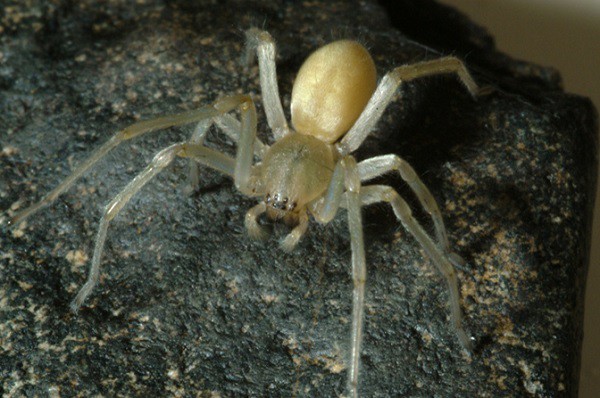
Yellow Sac Spiders are nocturnal hunters, and they don’t build webs to catch prey. Instead, they actively seek out insects at night and retreat to their silk sacs during the day.
These spiders are often mistaken for more dangerous species, but they are generally not harmful to humans. Yellow Sac Spiders play an important role in controlling insect populations and are frequently found in gardens, bushes, and homes.
6. Wolf Spider
- Scientific Name: Lycosidae spp.
- Size: 0.4-1.2 inches
- Weight: Up to 0.05 ounces
- Lifespan: 1-2 years
- Diet: Small insects, beetles, ants, and crickets
This Wolf Spiders is a large, ground-dwelling spider that is commonly seen across California. With their hairy bodies and swift movements, these spiders are often mistaken for tarantulas, but they are much smaller and less dangerous. Wolf Spiders are active hunters, chasing down their prey rather than waiting for it to stumble into a web.

They are solitary spiders, often found in gardens, forests, and even urban areas. They have excellent vision and rely on their speed and agility to catch prey, which includes a wide variety of insects.
The Wolf Spider is a nocturnal hunter, using its sharp eyesight and quick reflexes to locate and capture prey. Unlike many other spiders, Wolf Spiders do not spin webs to catch food. Instead, they actively stalk their prey on the ground or among leaves.
Read More🐦Related Articles:
- Finches In Hawaii
- Hawks in Tennessee
- Green Birds in Sarasota Florida
- Small Birds with Long Tails
- Types of Conures
- Scary Bird Species
Conclusion
Spiders in California are diverse and fascinating creatures that play a crucial role in controlling insect populations. From the colorful Johnson’s Jumping Spider to the industrious Grass Spider, each species has unique characteristics that make them important members of the ecosystem. While many people fear spiders, understanding their behaviors and benefits can help reduce that fear.
Each spider discussed in this article contributes to the environment in its own way, whether it’s catching pests in your garden or helping balance insect populations in the wild. As you explore California’s landscapes, keep an eye out for these incredible creatures and appreciate the role they play in keeping nature in balance.

